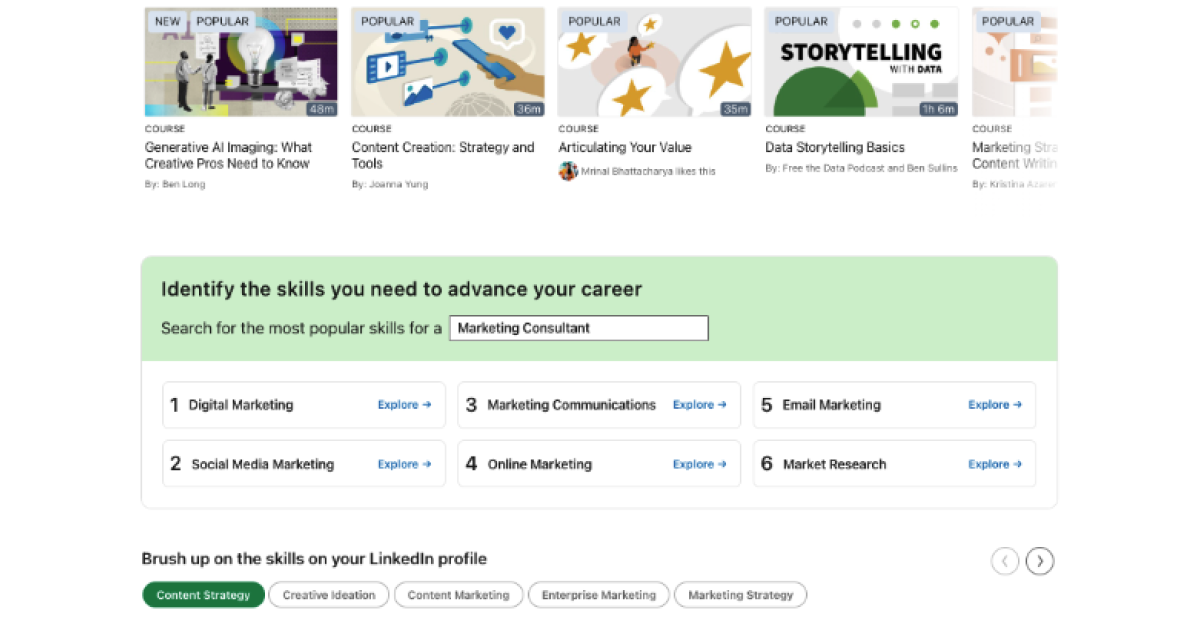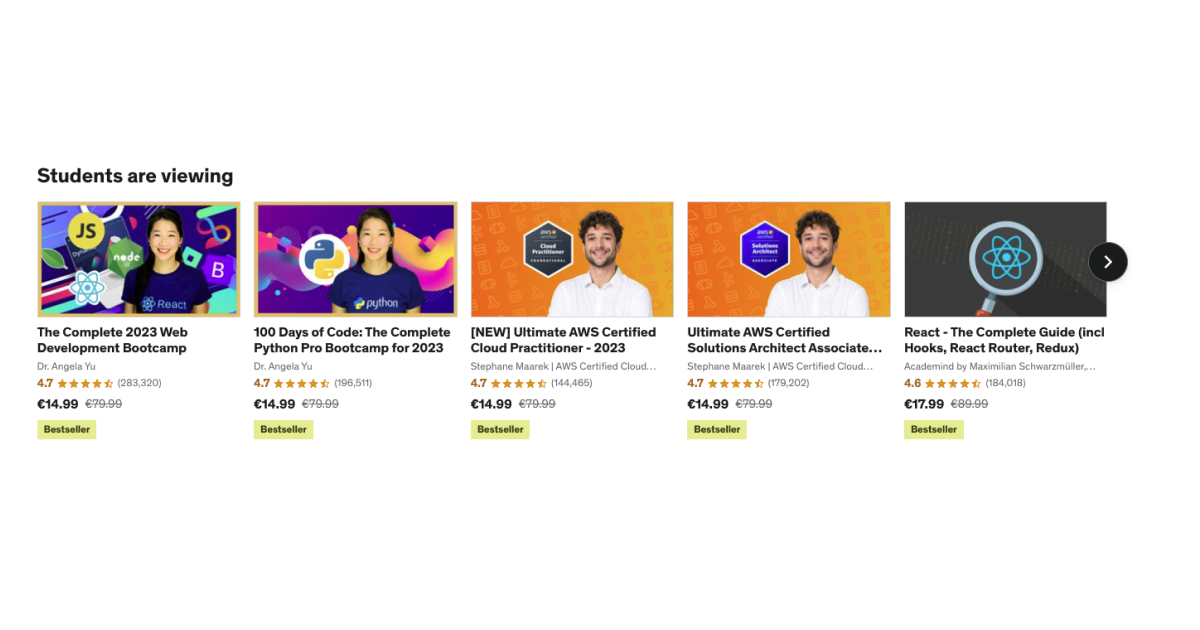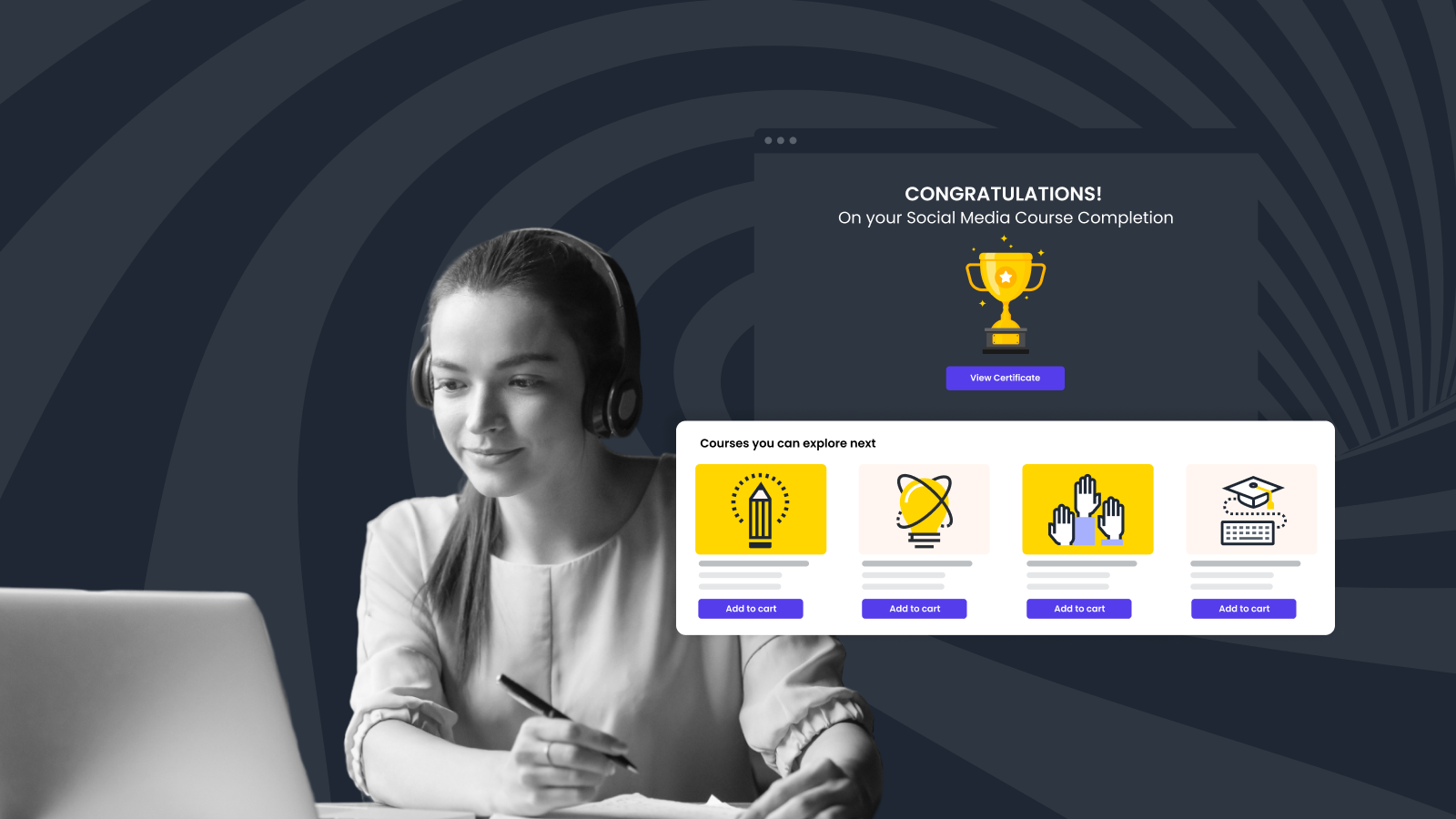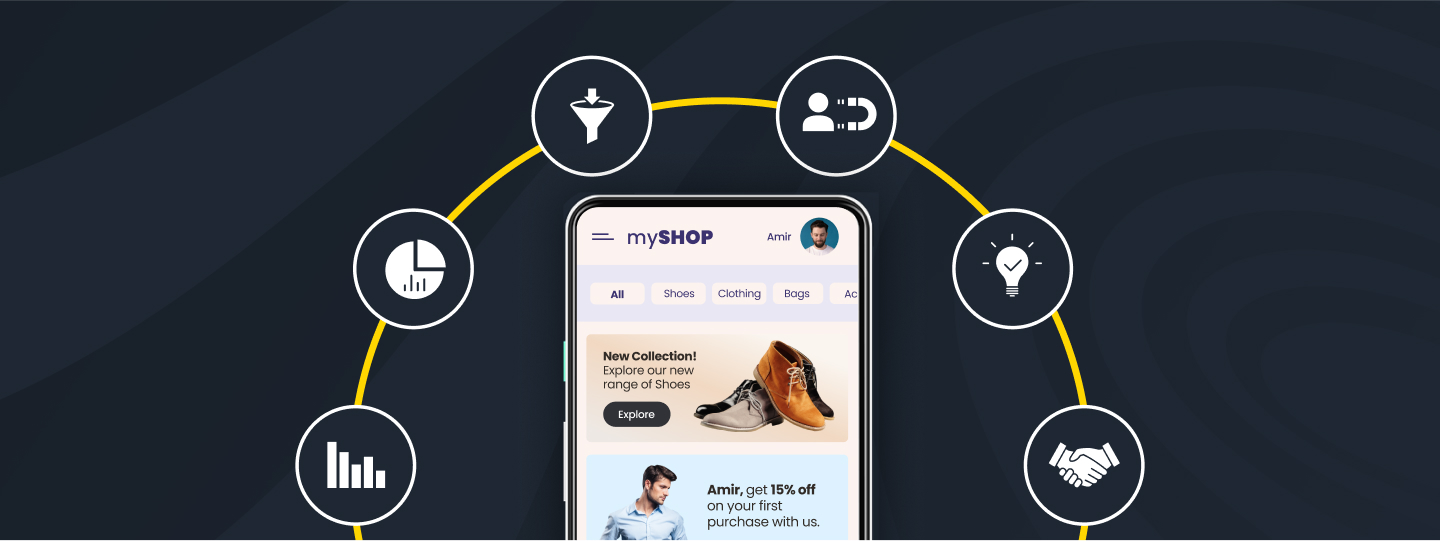By 2025, the Indian Ed-Tech ecosystem will touch $10.4 billion in market opportunity, growing at a CAGR of 39%. In the last few years, Ed-Tech has benefited greatly from the adoption of technology, a large youth population, and a growing demand for upskilling and reskilling.
In fact, in 2021, there were 1,113 universities, 43,000 colleges, and over 70+ million students, which makes India one of the biggest operators in the education space in the world. And while online education is nowhere close to the traditional setup – the acceptance of digital learning is spreading like wildfire because of the widespread adoption of online learning in the post-pandemic world.
So, now the question is, how can you stay ahead of the competition as an Ed-Tech brand? What would be a differentiating factor on your platform to beat the retention and engagement blues?
A direct solution to all these modern challenges is a vigorous product recommendation system. A recommendation system is a ‘tool that suggests services that are most likely in the interest of a user.’
In this blog, we will look into how the Ed-tech industry can beat the retention and engagement blues with the power of winning/ impactful product recommendations tailored for ed-tech platforms.
What are Ed-Tech conversions?
Statistics tell us that, on average, Ed-Tech companies are garnering 3,000-3,500 organic leads with an average conversion of 2-3%. Due to high churn, dwindling willingness to pay, and soaring competition Ed-Techs end up spending more. While big tech goes ballistic on paid channels like Facebook and Google and ads in traditional media like print and television, many young startups also resort to channels like Whatsapp groups and Facebook communities for lead generation.
Consumers see Ed-Tech purchases as long-term commitments, which is why many factors like more consideration, research, and evaluation come into the picture before making a purchase.
These costs can go even higher if the user funnel is broken. So imagine a customer showing interest in your course and leaving a query; if the website’s CRM is broken, this lead may go inactive before it’s activated. This conversion rate optimization is the holy grail of any functional Ed-Tech company that plans to survive in this cut-throat market.
How to calculate the conversion rate for your Ed-Tech business?
Calculating conversion for your Ed-Tech startups is not very different from traditional businesses – you just need to work with two data points. Start by analyzing the influx of audience versus those who took a desired action, such as signing up for a course or asking a follow-up question. This data can easily be obtained through your Google Analytics dashboard.
Conversion Rate = (Number of Conversions / Number of Visitors) x 100%
So imagine last month, in April 2023, 1000 users visited your landing page, and nearly 100 showed interest in your course by signing up for an upcoming workshop. So if someone asks you the conversion rate from this funnel, it’d be:
(100 / 1,000) x 100% = 10%
Meaning 10% of the total audience was convinced by your offering. This is where things get interesting. Marketers are put to true tests when they’re able to identify what it is really that worked for these users and then try to replicate the same for every user to maximize the conversion.
Many marketers resort to A/B testing their landing pages, some run a variety of ads, and others offer freebies and lower friction points which create low barriers to entry, but is there a sure-shot formula? Flint McGlaughlin, from MECLABS, coined a conversion sequence heuristics that creates a framework of five key elements that helps you drive conversion.

In this equation, the probability of a user’s conversion (C) is directly proportional to visitor motivation (m), the overall force of the value proposition (v), the presence of friction (f), the anxiety (a) in the process, and lastly, the incentive (i) offsetting the friction that cannot be eliminated.
The above equation loosely translated to a ‘thought tool’ that helps marketers increase their conversion probability by focusing more on the overall motivation and value proposition offered on the landing page versus each friction. However, at each step, ask yourself the following questions:
- Who are these users?
- How did they discover the website?
- Why did they drop?
- What more information do they need to move to the next stage?
- Are we addressing all the pain points?
Users’ buying journey is a combination of many ‘yes’ based on the confidence they get when they visit your website – thus, every step of the funnel is a crucial point. At each step, especially in the Indian Ed-Tech space with more than 4,500 startups, each micro-yes on the website is potentially competing with the rest.
What’s a recommendation engine?
The process of using data about user buying habits and behavior to suggest products or services they may be interested in is a recommendation. These systems use algorithms to study user data such as past purchases, buying history, search queries, and browsing behavior, amongst several other factors, to determine what a person is most likely to buy.
Recommendation engines are incredible tools for organizations to help users discover new products, increase average order per value, improve stickiness, and enhance the overall buying experience.
One of the most well-known examples of a good product recommendations is Amazon’s ‘Customers who bought this also bought’ feature. This feature alone helps Amazon account for 35% more purchases.

One of the main benefits of running these systems is improving customer experience and engagement by facilitating recommendations that are tailored to each customer.
On the business side, these engines can help predict buying behavior and allow businesses to optimize their operations, inventory, and supply chain. Businesses can understand their product popularity and better prepare themselves to cater to the needs of their customers.
Ed-Tech startups can study students’ grades, learning styles, and interest areas to recommend courses, upskilling opportunities, resources, study material, and guides. Using data to analyze the performance of the student on their ed-tech platform also enables them to suggest specific courses, increase the teacher’s community, and launch specific workshops or programs or interactive simulations.
Here’s an example of how LinkedIn suggests courses to a content marketing professional. As we can see, these recommendations cover the gamut of keywords that content professionals would have on their LinkedIn profiles and help them enhance their overall skill set.
To further strengthen the recommendation funnel, they also ask questions regarding one’s career and what skill one wants to build on. These strategies can be incredibly juicy for the software that work in the background. So for LinkedIn, the longer a candidate spends time on the website, the higher their commitment to the platform will be.

How can recommendation engines boost Ed-Tech growth?
The new-age pedagogy has made so many things obsolete too fast. In short, there is a dire need in the market to reskill and upskill, but discovery and realization is the biggest function.
Industry leaders in the Ed-Tech space in India like Byju’s, Eruditus, Unacademy, PhysicsWallah, Lead, UpGrad, and Vedantu have relied on some or the other form of recommendations – sometimes it’s a skill test that guides the candidate or a YouTube video that softly nudges on what’s the next big thing. Either way, the recommendation is at the core of discovery, motivation to pursue, exploration, and an initial influx of the audience’s interest.
A recommendation can help the business grow both in terms of generating higher revenue and creating a greater impact with customers leading to loyalty, engagement, increased Average Order Value (AOV), and repeat buying.
Here’s a look at what a robust recommendation engine can drive:
Competitive Advantage: As most businesses adopt recommendations, those who don’t are sure to fall behind in terms of user engagement, trust, and AOV, to say the least. Here’s a great example from Udemy, where students are also viewing sections under courses.
- It helps students discover new courses from their areas of interest
- It increases the discoverability of services
- It helps students in decision-making
- It builds social proof by displaying recommendations
This could put them ahead of the curve by nudging users into exploring an assortment of courses from both ends of the pricing spectrum. This strategy works incredibly well when users are unsure what to pursue next.

- Personalization: When organizations extrapolate by using users’ data from previous purchases, buying habits, and browsing history to make recommendations on what they should indulge in, they have a higher success rate. As many as 59% of buyers have agreed that it’s easier to find interesting products based on personalized retail stores.
- Better sales: As many as 56% of customers are likely to come back to an e-commerce site that provides product recommendations. With correct product recommendations, websites increase their chances of making a sale, leading to increased sales and revenue. Additionally, this is a big motivation for users to keep coming back because they feel that businesses pay attention to their needs.
- Higher engagement: Brick-and-mortar stores build their entire business on treating their customers nicely, building a relationship with them, and allowing them to spend more time so more purchases can happen – now, how to solve this in a digital ecosystem?
Using digital touchpoints to create personalized recommendations in content, suggestions, or time spent on the website, brands can enhance their user engagement. Customer relationships are built on trust, and your audience wants to feel seen and cared for.
Top recommendations for EdTech portals
High competition, low retention, and a crumbling engagement imperil the Ed-Tech market today. Amidst this, a variety of courses, the confusion of where to begin, and, importantly, which platform to choose is a query that looms over students.
Through product recommendations, brands can create their unique identity and navigate students toward an accurate and relevant search.
Let’s quickly examine how Ed-Tech platforms can build their recommendation engines.
- Personalized: We have discussed personalized recommendation systems widely deployed by e-commerce companies like Amazon and entertainment giants like Netflix, but Ed-Tech has benefited greatly from this algorithm too.
- Upsell & cross-sell: When students break into a new field like graphic designing or video editing, there can be an overwhelming amount of information on the internet about how to continuously upskill.
- Social proof: A decade ago, product recommendations from a friend or a colleague would make you sign up for that gym membership or buy an expensive vegan bowl that no one had heard of – all because someone you trust trusted it. Fast forward to a digital landscape, where these recommendations very much run the world in the sense of how people buy.
- Gamification: Gamification in Ed-Tech refers to using game mechanics and design principles in educational technology to enhance learning outcomes. The agenda is to drive more engagement from learners through an interactive experience. Brands have used quizzes, badges, leaderboards, and simulations to deploy gamification-based recommendations.
- Peer-based recommendation: Traditionally, peer-based recommendations drive education in India. So if more than half of your classmates are heading for an MBA or engineering, that may be the most obvious choice for you too. We all know someone who pursued a career choice out of peer pressure.
Importance & mistakes to avoid
Product recommendations are touted to be one of the most robust systems to allow users to discover new products, enhance engagement and explore opportunities across the breadth and depth of the product. In a recent study conducted by Accenture, as many as 91% of consumers agreed that relevant product recommendations about offers and services to shop enhance their experience.
In-house marketing teams who build these algorithms and work with relevant parameters that they deem fit for their audience can see an immediate uptick in sales by 19%. Coming to Ed-Tech platforms, it’s nearly becoming a need than a luxury since most students rely on the website to guide them in the right direction- of what is popular, what is trending, and what the brand envisages to be a skill needed in the future.
While building these systems, be accurate to the point of brilliance in deploying data and determining parameters. A small mistake in the input could lead to an irrelevant suggestion/ recommendation to the end user, potentially tarnishing their experience. This could lead to a lack of trust in the company and affect loyalty.
Conclusion
Indian Ed-Tech is a highly competitive industry, and the only way to float in such a market is to create a high-value creation, robust user engagement, a loyal audience, and a low CAC. Systems built by WebEngage for product recommendations are a boon to Ed-Tech organizations in identifying low-hanging fruits that are easy to deploy.
WebEngage has a proven track record of empowering Indian ed techs in improving their course recommendations and repeat purchases by 15% and 12%, respectively. These percentages can significantly impact the revenues and AOV of a business.
Want to build a powerful product recommendations for your Ed-Tech startup? Take a demo with us right away!


































 Vanhishikha Bhargava
Vanhishikha Bhargava








